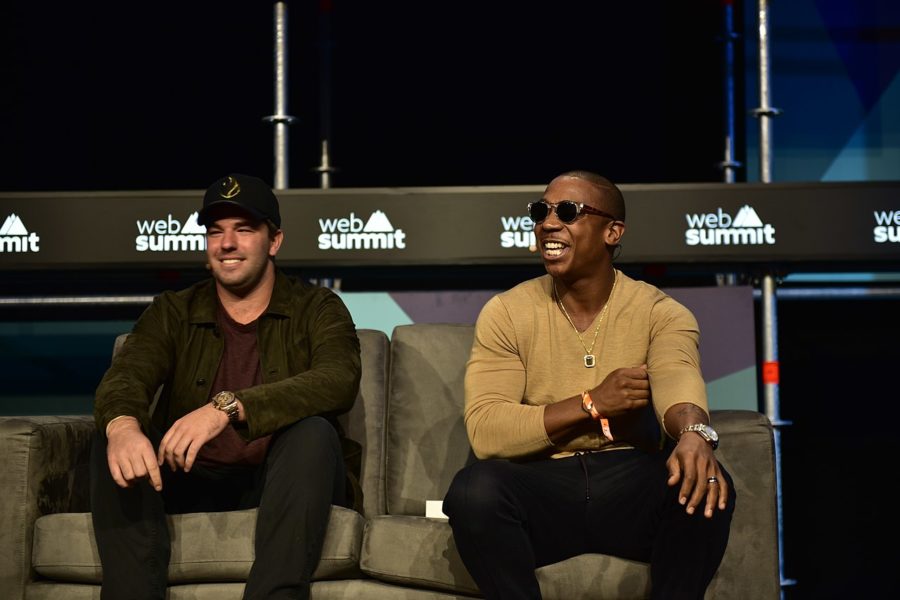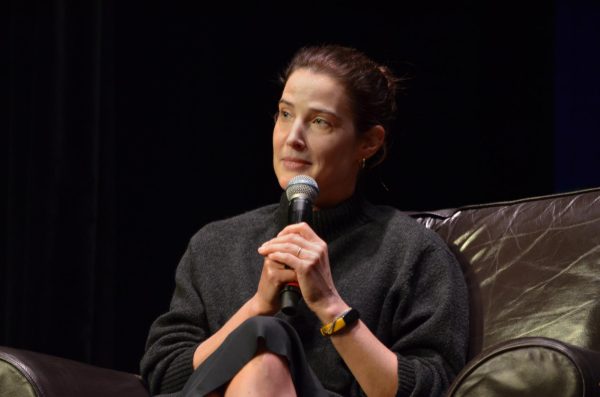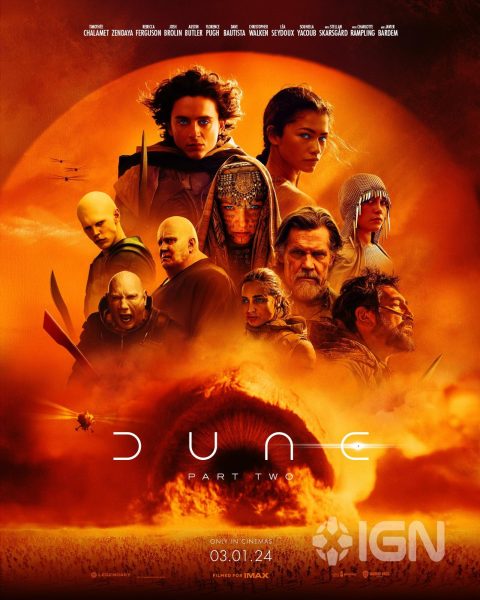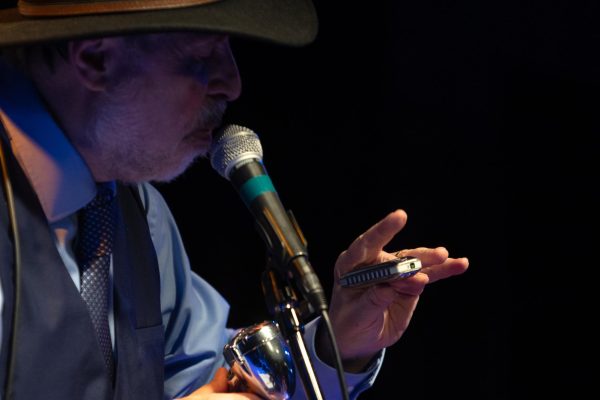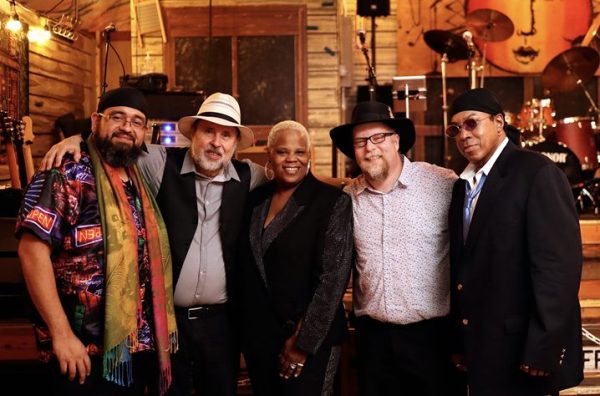Fyre Festival debacle reveals the power of social media influence
Billy McFarland and Ja Rule were both major proponents of Fyre Festival. On Feb. 1, Ja Rule addressed the fraud at a performance, leading his fans in a chant of “Let me hear you say ‘F*** you, Ja Rule!'”
February 3, 2019
Editor’s Note: This article has been updated to accurately reflect quotes. The Iowa State Daily regrets these errors.
When dueling documentaries detailing the disastrous Fyre Festival released on Netflix and Hulu in January, viewers learned about the power of influence.
Through viral marketing techniques and social media influencers, Fyre Festival creator Billy McFarland tricked hundreds of rich millennials into spending thousands of dollars only to become stranded at an unprepared music festival in the Bahamas.
“It seemed almost like an exclusive Woodstock,” said Michael Wigton, lecturer in advertising, public relations and social media at Iowa State. “They weren’t really selling the music, they were selling the experience; being able to tell people later ‘Hey I was at the Fyre Festival and you weren’t.’”
The ‘fear of missing out’ (FOMO) is a social media phenomenon Wigton said is the biggest motivator for social media users and is common with the millennial generation. FOMO is an anxiety triggered by exclusion or missing an opportunity. Social media is the main channel in which people experience FOMO.
“You’re always connected because you don’t want to miss out on anything,” Wigton said. “That’s why millennials tend to sleep with the phone right next to their ear.”
Millennials, born in the early 1980s to the mid-1990s, were easy targets for McFarland’s young, entrepreneurial mind to sell to.
“They were definitely tapping into the mindset of younger people,” Wigton said. “For [millennials] it’s more about how cool the product is than how it works, and the Fyre Festival was cool.”
Billed as a luxurious and immersive music festival, the Fyre Festival aimed to change the landscape of music events and deliver an experience talked about for years.
The festival’s selling points included partying with famous Instagram models, a million-dollar treasure hunt and being a part of an exclusive, culturally-relevant event. Tickets for the festival sold for up to tens of thousands of dollars. Wigton said they weren’t just selling a concert or a music festival, but a lifestyle.
But when attendees arrived at the Fyre Festival they learned that all musical acts had pulled out, they would be sleeping in disaster relief tents and the food and water supply was limited.
Beatriz Pereira, assistant professor in marketing and researcher of consumer behavior, said the Fyre Festival was a straightforward case of over-promising and overconfidence that tricked investors and costumers.
“Here you have an entrepreneur who is a sociopath and a compulsive liar. It gets everything to an extreme level. There were a lot of red flags, but when people are optimistic then they don’t want to see it,” Pereira said. “People bought into it, but it wasn’t a very rational decision. It was like a gut reaction that ‘I need to be there because everyone that matters is going to be there.’”
Wigton explained that marketing and public relations campaigns that make the best connection with their consumers do so through emotional connection. The actual product matters less than the way it makes you feel.
Pereira said the Fyre Festival didn’t appeal only to positive emotions such as joy or excitement, but to negative emotions as well.
“There’s a lot of competition in social media,” Pereira said. “It’s the ‘I want everyone else to be envious about me’ feeling. They made it successful by making it very exclusive and scarce. People just overvalued it.”
To promote the festival, McFarland paid social media influencers on Instagram to post an orange tile disguised as a Fyre Festival advertisement to their millions of followers. This tactic created a feeling of exclusivity, furthering the FOMO. The use of paid social media influencers is important, Wigton said.
“It was just that ‘Oh this is cool, I know what this is and not everybody else does,’ it’s like being in an exclusive club,” Wigton said. “I think there is an appeal for a lot of people on social media to have that underground knowledge. Once something hits mainstream then a lot of people aren’t as excited about it.”
The power of influence has always existed in media through celebrity endorsements, Wigton said. However, influencers on social media, whether it be YouTube or Instagram, provide a sense of authenticity traditional media doesn’t.
“Now you don’t necessarily have to be a celebrity, and actually, sometimes that helps,” Wigton said.
A social media influencer could be anyone from a famous model on Instagram plugging makeup products or a YouTuber who plays Fortnite reviewing a headset. Wigton said influencer advertisement is less overt. Instead of directly promoting the product, influencers show how they use it in their lifestyle, creating an authentic feel to the advertisement.
Pereira finds consumer’s trust in influencers amazing.
“You’ve made that public commitment of ‘This someone I follow, this is someone that I like,’ so it takes a lot for you to break that trust,” Pereira said. “That’s why it’s so powerful because it precedes any attempt of coercion. You see all these everyday celebrities sponsoring products, it starts really small and suddenly everything is being paid for. ’They’re just like me, they are not a company, they have their own voice, they have their own brand.’ This completely disregards the fact that those people are being payed and therefore they should also be professional.”
Pereira said that regulations are likely to follow something disastrous such as the Fyre Festival occurs. Social media influencers are now disclosing when they are being paid to promote a product. Consumers will also be much more skeptical in placing their trust in social media personalities.
In the perfect storm of the right situation, the right people going and tapping into the right mindset or targeted audience, Wigton said an event like Fyre Festival could happen again. He advises young consumers to get their news from multiple sources and search for information outside of social media.
“Just be an informed consumer,” Wigton said.

